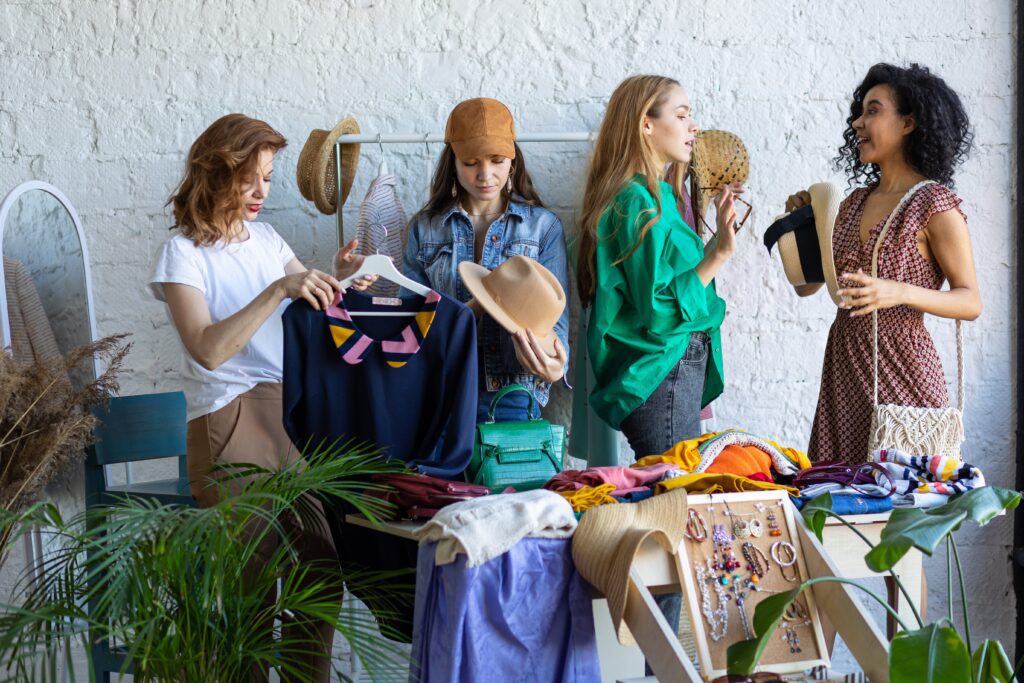Sustainable Fashion: Ethical Clothing Choices and Storage Solutions
Practical Strategies for Sustainable Wardrobe Management
Sustainable fashion is more than just a trend—it’s a commitment to making ethical clothing choices that prioritize people, planet, and animal welfare. From choosing garments made from eco-friendly materials to supporting brands with transparent and ethical supply chains, there are many ways to embrace sustainability in your wardrobe. We’ll explore ethical clothing choices and storage solutions that align with sustainable fashion principles, helping you build a wardrobe that reflects your values and minimizes environmental impact.
1. Make Ethical Clothing Choices:
When it comes to sustainable fashion, the first step is to make ethical clothing choices that support fair labor practices, environmental conservation, and animal welfare. Start by researching brands and retailers that prioritize sustainability and transparency in their supply chains. Look for certifications such as Fair Trade, GOTS (Global Organic Textile Standard), and B Corp, which indicate a commitment to ethical and sustainable practices.
Choose garments made from eco-friendly materials such as organic cotton, hemp, bamboo, and Tencel lyocell, which are grown and processed without harmful chemicals or pesticides. Avoid synthetic fibers such as polyester and nylon, which are derived from fossil fuels and contribute to microplastic pollution in the environment. Opt for natural and biodegradable materials whenever possible, which have a lower environmental impact and can be composted at the end of their life cycle.
Consider the longevity and versatility of each garment before making a purchase. Invest in timeless pieces that will withstand trends and transitions in style, and choose classic colors and silhouettes that can be mixed and matched with other items in your wardrobe. Prioritize quality over quantity, and opt for well-made garments that are built to last, reducing the need for frequent replacements and minimizing waste.
2. Practice Conscious Consumption:
In addition to making ethical clothing choices, practicing conscious consumption is essential for minimizing waste and reducing the environmental footprint of your wardrobe. Before making a new purchase, ask yourself whether you truly need the item and how it aligns with your personal style and values. Consider whether you already own similar items that serve the same purpose, and whether the new purchase will add value to your wardrobe.
When shopping for clothing, prioritize secondhand and vintage options whenever possible. Thrifting and shopping at consignment stores not only reduce the demand for new clothing production but also give pre-loved garments a second life. Explore online resale platforms and clothing rental services, which offer a sustainable alternative to traditional retail shopping and allow you to experiment with new styles without committing to a permanent purchase.
If you do decide to buy new clothing, choose garments with a transparent and traceable supply chain. Research brands and retailers that prioritize ethical production practices, fair wages, and safe working conditions for garment workers. Support small businesses and independent designers who prioritize sustainability and craftsmanship in their designs.
3. Embrace Minimalism and Capsule Wardrobes:
Minimalism and capsule wardrobes are sustainable fashion practices that promote mindful consumption and intentional living. Embracing a minimalist mindset involves simplifying your wardrobe and lifestyle, focusing on quality over quantity, and decluttering excess belongings. Capsule wardrobes are curated collections of essential pieces that can be mixed and matched to create a variety of outfits, reducing the need for excessive clothing and promoting versatility and creativity in styling.
To build a sustainable capsule wardrobe, start by assessing your personal style and lifestyle needs. Identify key pieces such as tops, bottoms, dresses, and outerwear that are versatile and suitable for a variety of occasions. Choose neutral colors and classic silhouettes that can be easily mixed and matched, and add pops of color or statement pieces to personalize your wardrobe.
When organizing your capsule wardrobe, prioritize items that align with your values of sustainability and ethical production. Choose garments made from eco-friendly materials, support brands with transparent supply chains, and prioritize secondhand and vintage options whenever possible. Keep your wardrobe streamlined and clutter-free by regularly decluttering items that no longer serve a purpose or bring you joy.
4. Invest in Sustainable Storage Solutions:
Proper storage is essential for preserving the quality and lifespan of your ethical clothing collection. Invest in sustainable storage solutions that protect your garments from dust, sunlight, moisture, and pests, ensuring they remain in pristine condition for years to come. Opt for eco-friendly storage options made from renewable or recycled materials, such as bamboo, cork, or organic cotton.
When storing clothing, avoid plastic garment bags and storage containers, as they can trap moisture and promote the growth of mold and mildew. Instead, choose breathable garment bags made from natural fibers such as cotton or linen, which allow air circulation and prevent moisture buildup. Store garments in acid-free tissue paper or muslin bags to protect delicate fabrics and prevent creasing.
Consider investing in cedar blocks or lavender sachets to repel moths and other pests naturally. These natural deterrents not only protect your garments from damage but also add a pleasant fragrance to your storage space. Avoid using mothballs or chemical pesticides, as they can be harmful to both your health and the environment.
When organizing your clothing storage, prioritize visibility and accessibility to make it easier to locate specific items when needed. Use clear storage bins or transparent garment bags to keep items visible and organized, and label containers or shelves with the contents for easy identification. Group similar items together by category, such as tops, bottoms, dresses, and outerwear, to streamline the storage process.
Empowering Change: Building a Sustainable Fashion Future
Sustainable fashion is about more than just clothing—it’s a commitment to ethical and conscious consumption that prioritizes people, planet, and animal welfare. By making ethical clothing choices, practicing conscious consumption, embracing minimalism and capsule wardrobes, and investing in sustainable storage solutions, you can build a wardrobe that reflects your values and minimizes environmental impact. With these sustainable fashion storage tips, you’ll be well-equipped to care for and enjoy your clothing collection for years to come.






